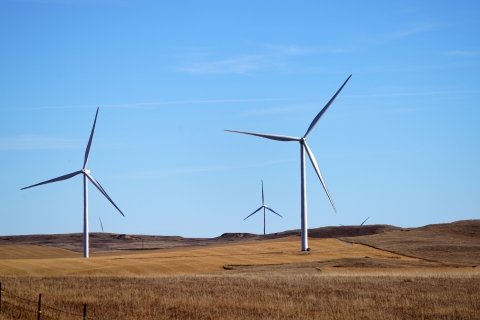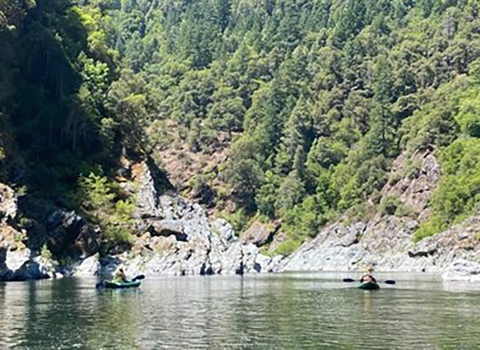There are more than 70,800 wind turbines throughout the United States, Puerto Rico, and Guam. In 2022, wind turbines were the source of approximately “10.3% of total U.S. utility-scale electricity generation” (https://www.eia.gov/energyexplained/wind/electricity-generation-from-wind.php). Wind energy is a renewable source of energy and is important for helping the United States lessen dependence on fossil fuels for energy production and to help the nation meet goals to curb climate change climate change
Climate change includes both global warming driven by human-induced emissions of greenhouse gases and the resulting large-scale shifts in weather patterns. Though there have been previous periods of climatic change, since the mid-20th century humans have had an unprecedented impact on Earth's climate system and caused change on a global scale.
Learn more about climate change .
How does land-based wind energy impact migratory birds?
The siting, construction, and operation of wind turbines create stressors such as habitat alteration, noise, artificial lighting, and tall structures that far exceed the height of the natural landscapes around them. These stressors create threats to migratory birds, such as degraded habitat upon which migratory birds depend, artificial lighting that can disorient migrating birds, and large wind turbines into which birds can collide not only when the blades are rotating but also when they are still.
Of the nearly 300 bird species known to have been killed at onshore wind facilities, songbirds were the most frequent (57% of fatalities), followed by diurnal raptors (9%). Although raptor mortality rates appear lower than those of songbirds, raptors are especially vulnerable to collisions given their soaring flight behavior. Additionally, given their low abundance as compared to songbirds, low reproductive rates, and longevity, mortality from turbines may disproportionately affect raptor populations.
Can wind energy be good for birds?
Climate change is affecting habitats everywhere birds occur, and it is threatening or is expected to threaten the conservation of several migratory bird species. Wind energy is a renewable source of energy that can aid in reducing use of fossil fuels, which is a driver of climate change. While indirect, slowing climate change through renewable energy can have long-term beneficial impacts to migratory birds by giving habitats and species time to adapt, thus aiding in their conservation.
What can I do to avoid and minimize impacts to birds?
Through proper planning and use of avoidance and minimization measures, it is possible to reduce the potential for impacts to migratory birds from land-based wind energy. The U.S. Fish and Wildlife Service, or Service, developed Land-Based Wind Energy Guidelines that, when followed, have the most potential to reduce adverse impacts to migratory birds. The risk of a bird collision with a wind turbine is influenced by facility location, including turbine placement, how birds move across the landscape, and turbine design. Siting of wind energy facilities at both the macro- and micro-scale is deemed a critical element in reducing bird/turbine collision risk. The Service stresses that communication and collaboration early in the planning phases of projects will have the most benefit to all parties to meet the shared goals of renewable energy production and conservation.
Library Documents
If you would like to provide comments on the information presented on this webpage, please contact the USFWS Migratory Bird Program at MigratoryBirds@fws.gov.



